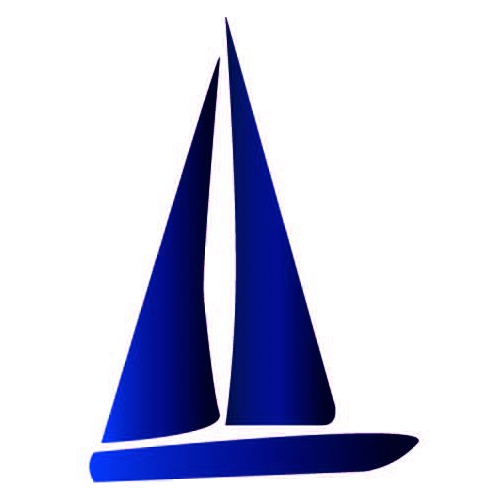Quite often, I get calls asking if I teach all women’s courses. The reason women ask for this, usually, is because they are tired of trying to learn sailing from their husbands, or they may have been in courses where the men tended to take over. I interviewed Betsy Alison at the Bitter End Yacht Club (Virgin Gorda, B.V.I.) in the late ‘90s. She has been named Rolex Yachtswoman of the Year, and is one of the best sailors in the world. She told me that even she gets into situations on race boats where men ask her to step aside so they can handle the jib sheets during a tack.
Of course, in my sailing classes, I hardly ever get men like this, ; ) but the different learning styles of men and women make men more eager to do the hands-on stuff while women tend to sit back and analyze.
Title 9, the law that made schools offer equal physical education opportunities in girls’ and boys’ sports, made a huge impact on how women approach learning to sail. Women who went to high school after Title 9 went into effect in 1975 show very little difference from men in their eagerness to take the helm and try new skills. I see no gender differences in learning attitude between men and women who had the advantage of a Title 9 education. Women who finished high school before 1975, generally speaking, have a more reticent attitude towards trying new things and tend to defer to men. It is amazing to me how sharp the difference is between these two groups of women. This article may help you teach “pre-Title 9” women – the Baby Boomer generation – a major demographic of sailing students.
Some sailing schools don’t let husbands and wives in the same course, because each couple already has their communication dynamic set into place, and a lot of times this is where the husband absorbs the information and then relays it to his wife. While he’s translating to his wife what I just said, I am explaining the next step, and they have both missed it, and are now behind the rest of the class. For couples like this, I tell the man his help is needed at the bow of the boat so that the woman gets to hear what I’m saying first-hand.
I was teaching a female student how to drive the dinghy in the Virgin Islands. She was doing great. But when we drove back toward our boat her husband was on deck watching us. She immediately started driving erratically, forgot about how to use the throttle and just about hit our sailing yacht. I asked her what happened all of a sudden. She said. “My husband was watching.” Independently, she had mechanical skills, but in a couple with him, she did not. Her husband handled the mechanical stuff in their home life, and this dynamic spilled over into our sailing course.
When men and women take sailing courses, the instructor can structure the course so that every student gets equal time at the helm and gets equal attention from the instructor. But men tend to want to try things even before they have gotten the whole explanation on how to do it, and women tend to want to find out all the details and be fully prepared before they start something. The instructor has to balance the needs of women for more information with the enthusiasm the men have to “just do it.”
To make a gross generalization, I’d say that women tend to be information gatherers and men tend to be experience gatherers.
Most of the cruising courses I teach on Lake Superior are with all male students and we leave the dock on the first day after two hours at the most. During an all women’s course, even on the third day we were sometimes on the dock till past noon, discussing more details about how each boat system worked. The women knew it was their only opportunity to get their questions answered, and no one was bored when one of the students asks for minute details about how the house battery system worked, or how to replace a through-hull plug.
For men it seems that some of the fun is taken away if they know too many details before they start out. I’ve often been frustrated waiting for a man to tie a bowline when he doesn’t know how. The man will insist, “I can do it, just wait.”
Some women tend to shy away from skippering big boats because they feel they do not have the upper body strength that men have. Dawn Riley, who is a big boat race champion, says that she can do anything on the boat a larger person can do but it just takes her more time. I agree. When I have to move a heavy anchor or load anything heavy into the boat, I look at the problem from a mechanical engineering perspective and set up the problem so I’m using leverage and gravity to the best effect. So, it’s just a matter of planning, and being a woman, I’m into planning and analyzing anyway.
As a sailing couple, the best combination is to have two people with two different learning styles and two different operating styles. That way, when there is any kind of challenge, they can be analyzing it from two different perspectives and have two different options on how to handle it. On a boat two heads are better than one. If those two heads have respect for each other’s styles, they are able to tackle anything that comes their way.
by Captain Joan Gilmore
[email protected]
MLS, Adult Learning Styles
SailAwaySailingSchool.com
